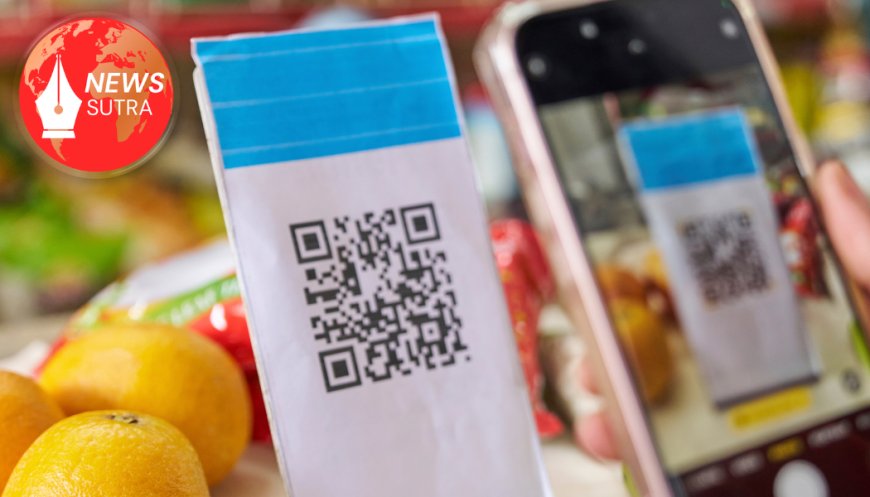How UPI is Powering a Digital Retail Revolution in India’s Small Towns and Villages
UPI is transforming traditional retail in Tier 2, Tier 3, and rural India by enabling seamless digital payments. Learn how it's reshaping small business ecosystems and financial inclusion.

The digital payment revolution in India is no longer confined to metros like Mumbai, Delhi, or Bengaluru. Thanks to Unified Payments Interface (UPI), traditional retailers in Tier 2, Tier 3 cities and even remote rural areas are rapidly embracing cashless transactions—reshaping not just commerce, but also the economic fabric of the country.
From local kirana stores in Gorakhpur, to vegetable vendors in Chhindwara, UPI adoption is surging. According to recent data from the National Payments Corporation of India (NPCI), UPI recorded over 13.3 billion transactions worth ₹20.45 lakh crore in May 2025, with a significant chunk originating from non-metro locations.
This rise signals a broader shift: UPI isn’t just a fintech success story—it’s a disruptive force transforming traditional retail across Bharat.
What Makes UPI So Disruptive?
UPI’s innovation lies in its real-time, low-cost, mobile-first payment infrastructure, which simplifies how merchants and consumers transact.
Key Features Driving Adoption:
-
Zero Merchant Discount Rate (MDR): Makes it cost-effective for small vendors.
-
QR Code Simplicity: Any shopkeeper with a feature phone and a UPI ID can start accepting payments.
-
Interoperability: Works across banks and wallets without needing POS machines.
-
Low Barrier to Entry: No technical know-how required to start accepting payments.
Platforms like PhonePe, Google Pay, Paytm, and BharatPe have aggressively expanded QR deployment in rural zones. PhonePe, for instance, claims to have over 35 million merchants on UPI, many of whom are located outside Tier 1 cities (source).
Where the Disruption Is Happening
1. Kirana Stores and Local Vendors
Small shop owners in towns like Raipur, Nashik, and Varanasi are increasingly using UPI to replace cash and credit-based sales. QR stickers are visible at every checkout counter, and even ₹10 purchases are routinely paid via UPI.
2. Weekly Bazaars and Hawkers
Weekly markets, earlier strictly cash-based, are now buzzing with vendors flashing “UPI Accepted Here” boards. This is especially evident in states like Odisha, Bihar, and Madhya Pradesh, where cash dependency was historically high.
3. Public Transport and Services
Auto-rickshaw drivers, small dhabas, barbers, and tailors in Tier 3 towns are all joining the UPI economy. This cashless convenience has increased trust and transactional efficiency, especially for women and youth.
4. Rural Women Entrepreneurs
With schemes like Digital Saksharta Abhiyan (DISHA) and Self-Help Groups (SHGs) integrating digital payments, rural women are using UPI for micro-enterprises—be it selling pickles, clothes, or dairy products.
The Socioeconomic Ripple Effect
UPI’s impact goes far beyond transaction speed:
-
Reduces Cash Leakage: No need to return change or worry about counterfeit notes.
-
Promotes Financial Inclusion: Every transaction builds a digital footprint, enabling access to loans and microcredit via platforms like Jana Small Finance Bank.
-
Boosts Tax Compliance: Brings more small traders under formal economy with traceable records.
-
Enhances Safety: Especially important for women, who no longer have to carry cash in vulnerable locations.
The Role of Government and Policy
The Indian government has been instrumental in pushing UPI to the grassroots. Initiatives like:
-
DigiDhan Mission: Encouraging cashless transactions post-demonetization.
-
PM SVANidhi Scheme: Street vendors now receive loans only if they accept digital payments.
-
Financial Literacy Camps by RBI: Educating citizens about UPI and cyber fraud prevention.
Moreover, the Reserve Bank of India’s Payment Vision 2025 envisions UPI becoming the backbone of India’s retail payments ecosystem, including in rural areas.
Challenges on the Ground
Despite its success, the UPI revolution still faces hurdles:
-
Internet Connectivity: Patchy mobile networks in rural areas can slow down transactions.
-
Digital Literacy: Elderly shopkeepers often rely on their children to handle apps.
-
Cybersecurity Concerns: Rising fraud cases have led to trust issues, especially among first-time users.
-
Language Barriers: Although UPI apps are increasingly multilingual, full penetration requires better regional customization.
However, fintech startups are innovating to address these gaps. Companies like Khatabook and OkCredit are building vernacular-friendly apps that merge bookkeeping with UPI, making it easier for small businesses to track income and expenses.
Future Outlook: UPI 2.0 and Beyond
The future of UPI in India’s traditional retail looks exceptionally bright, driven by:
-
UPI Lite & Offline UPI: Enabling micropayments without internet connectivity.
-
Voice-Based UPI: Especially useful for illiterate or non-tech-savvy users.
-
Credit on UPI: Rolling out buy-now-pay-later models for micro-merchants.
NPCI is also planning to scale UPI’s international footprint, opening up cross-border payment opportunities for exporters and artisans in small towns, as covered in Business Standard.
Final Thoughts
What started as a digital convenience in urban India has now morphed into an economic equalizer for Bharat. UPI is no longer just an app—it’s a movement transforming how millions of small retailers operate, grow, and compete in the 21st century economy.
As India marches towards a $5 trillion digital economy, UPI will remain at the heart of this transformation—connecting bazaars to banks, the unbanked to opportunity, and every corner of the country to a digital future.














